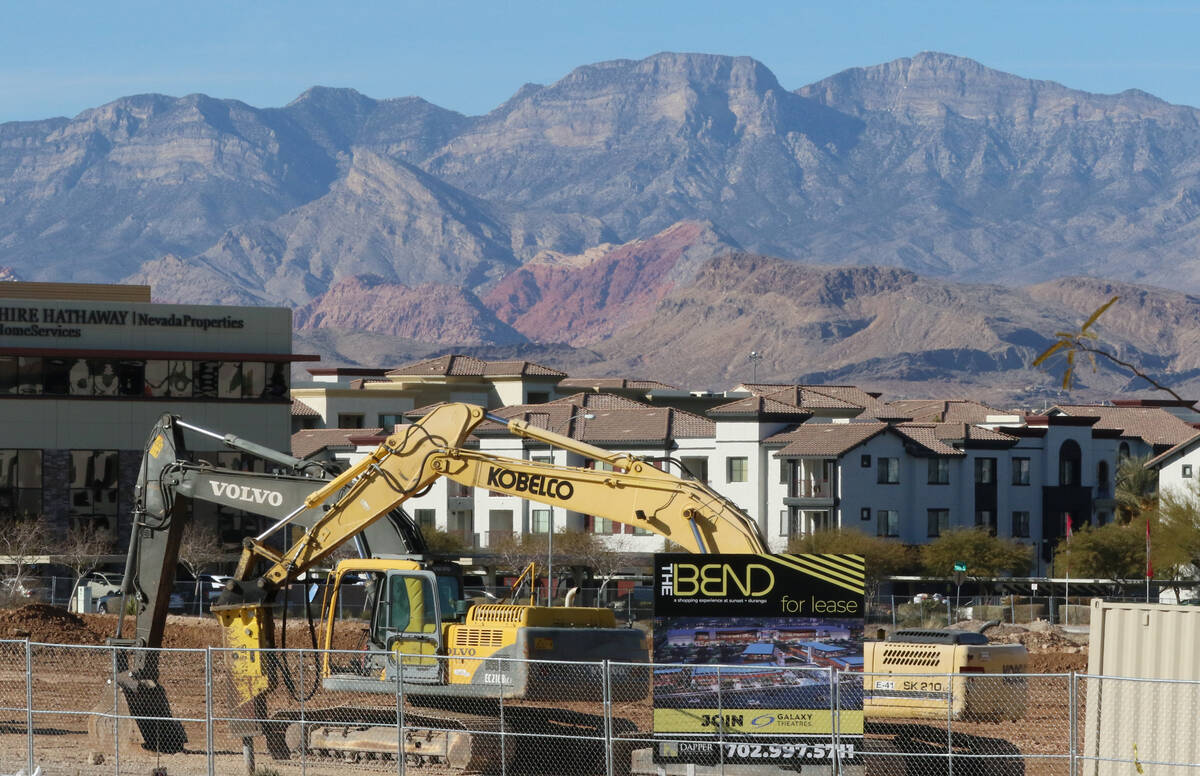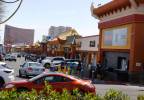‘Not a lot of space’: Limited supply impacting Las Vegas retail market
As vacancy rates lower and construction remains stable, there is more competition in the retail real estate market throughout Las Vegas.
A report from the real estate firm CBRE Group Inc. found that vacancy rates for retail real estate fell to 4.4 percent across the Las Vegas market in the second quarter of 2023, which is a slight 0.1 percent drop from the 2022 figure during the same period.
“Even with the economic indicators that have put pressure on the market overall, we’re still seeing good demands, there’s just not a lot of opportunity out there,” said Jennifer Ott, a first vice president with CBRE. “There’s just not a lot of space out there and everybody’s sort of going out for the same spaces.”
That competition has driven leasing rates to increase 25 percent from last year and vacancy rates in high-demand areas of the Las Vegas Valley hitting “crazy” rates, according to Ott. The northwest area of the Las Vegas Valley has a vacancy rate of 2.1 percent and the southwest has a vacancy rate of 3.2 percent.
Chris Waldburger, an associate with ROI Commercial Real Estate, said that these areas of town are becoming popular in the retail space since there is available land and where new residential developments are being added.
“We’re seeing a lot of land development on the single tenant side, and various parts of town,” Waldburger said. “Everything seems to be kind of expanding on the perimeters of the city.”
Waldburger states that interest in the retail Las Vegas market seems to be growing across the nation and pointed to the recent news of national restaurant chains like Bojangles and Whataburger announcing locations in Las Vegas.
It’s likely a competitive retail market could continue as just under 331,000 square feet of space is currently under construction, according to the CBRE report, which described the construction levels as “stable.”
The focus for constructing new retail real estate is on smaller property sizes that typically accommodate one to four businesses rather than large-scale developments anchored by one large store, according to Ott. She said this is happening because smaller properties are typically a safer investment for developers.
“A lot of the new construction that we’re seeing is the single-tenant buildings, it’s a gas station, a car wash, a fast food restaurant or a coffee shop,” Ott said. “It’s a little bit lower risk, typically and those tend to have lower cap rates.”
While lease and vacancy rates are showing a healthy retail market there has been a decline in overall sales. The CBRE report shows total sales volume in the second quarter was $129 million, which is an 80.9 percent decrease from the previous year.
Both Ott and Waldburger attribute a decline in sales to rising interest rates and land acquisition costs. Ott said most sales are being done by all-cash buyers who aren’t as impacted by interest rates changing and that typical buyers who may finance a deal aren’t as interested in jumping into the market.
“I think a lot of people are sitting on the sidelines right now kind of waiting to see what happens,” Ott said.
Contact Sean Hemmersmeier at shemmersmeier@reviewjournal.com or @seanhemmers34 on Twitter.





























